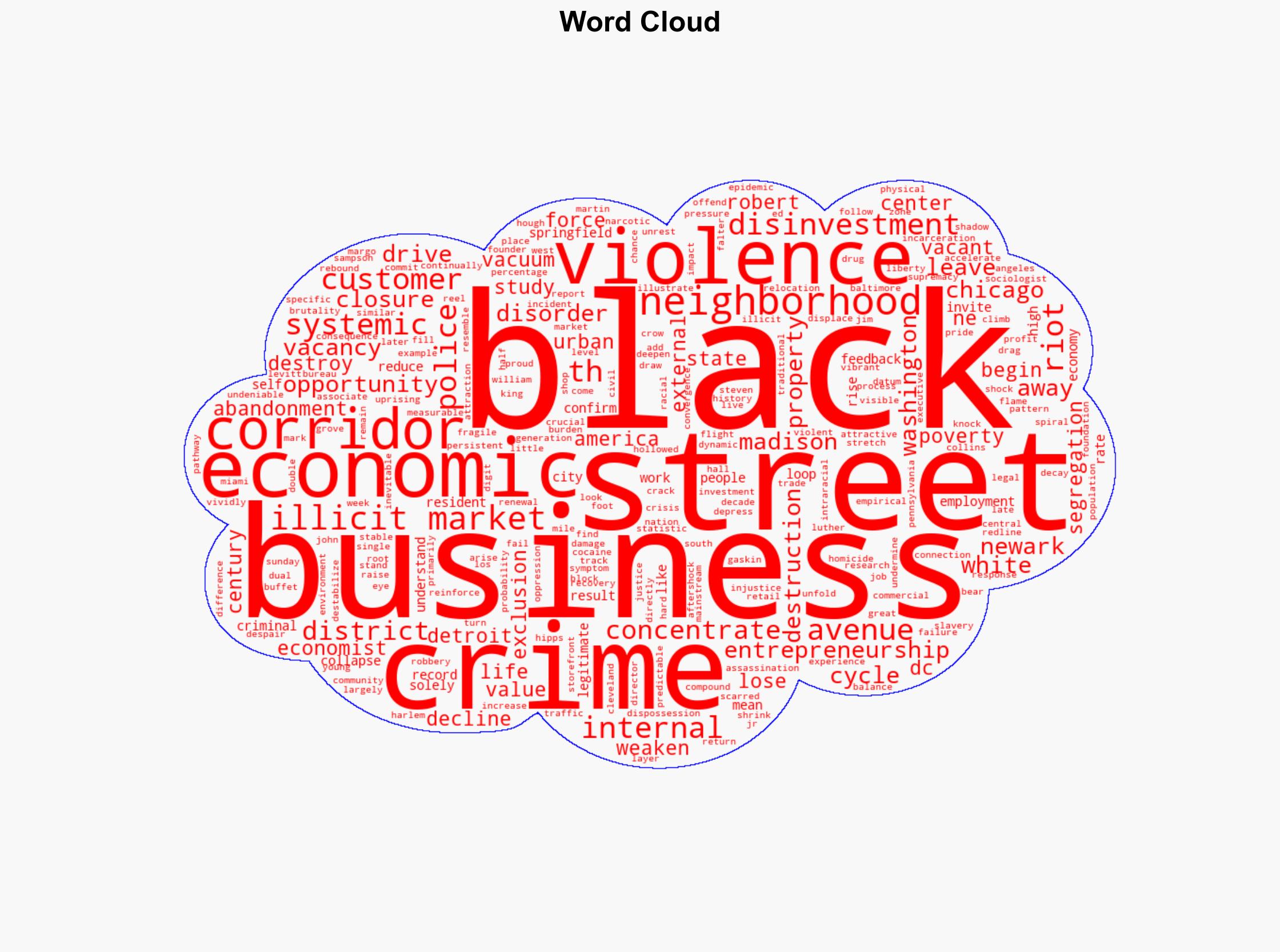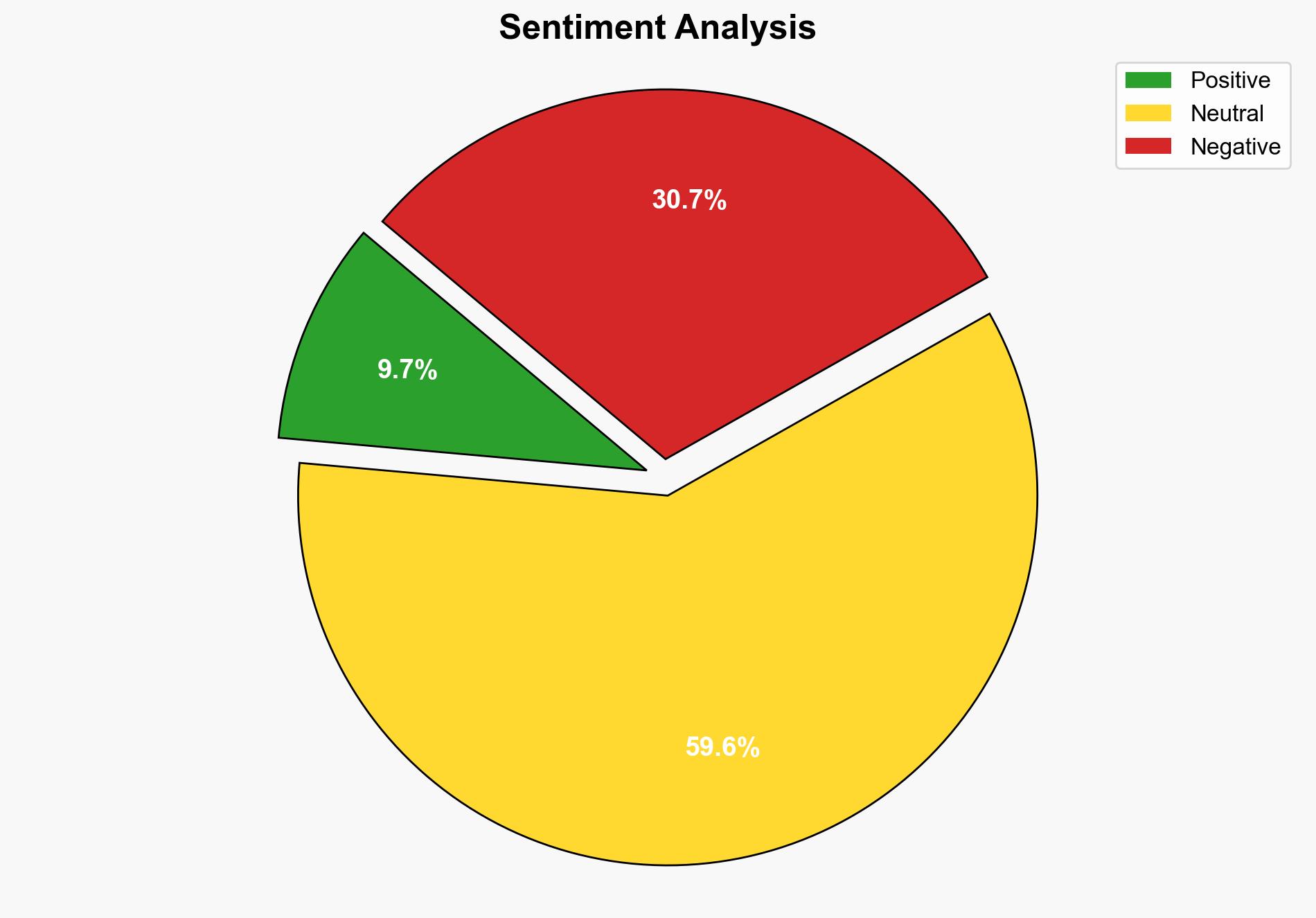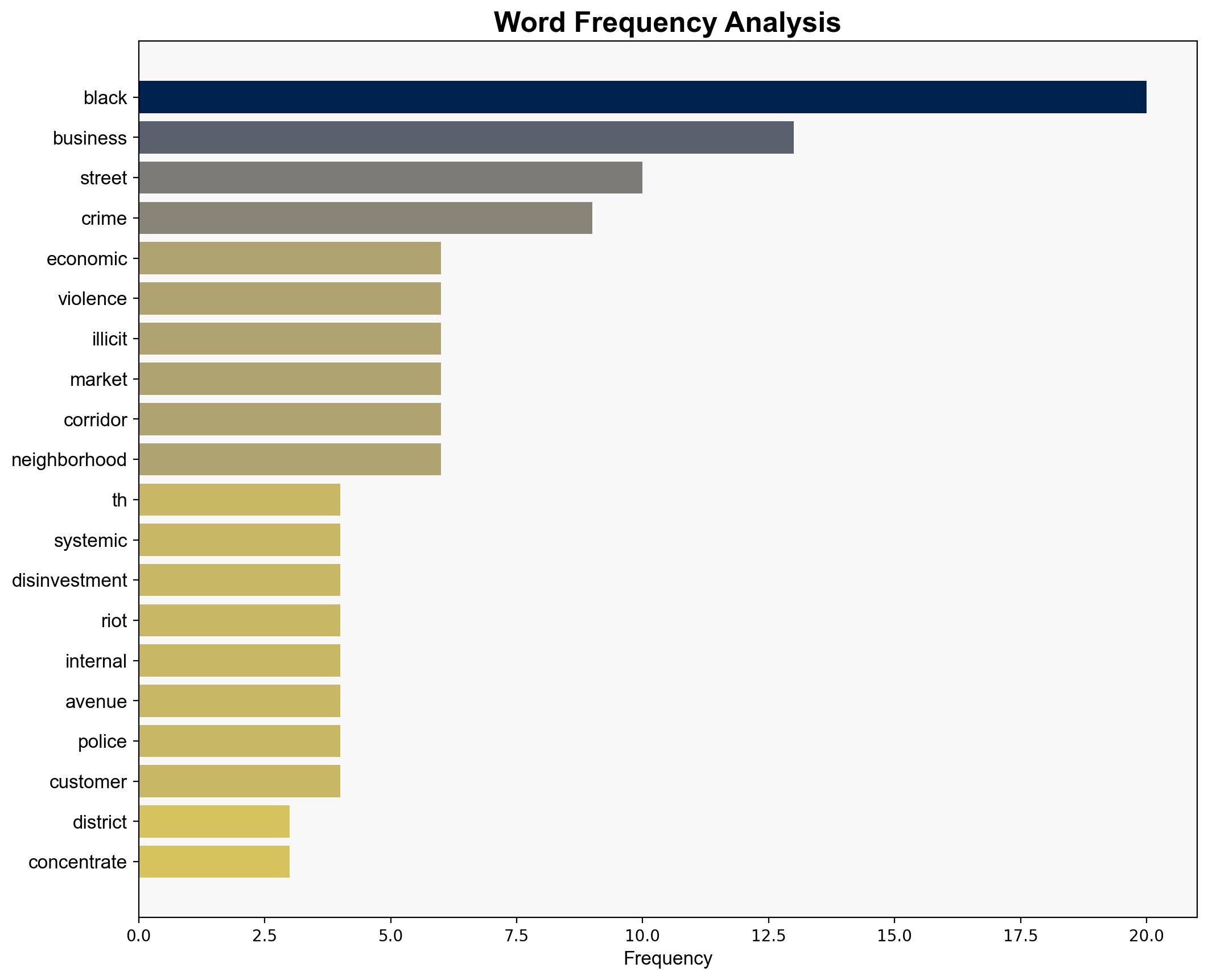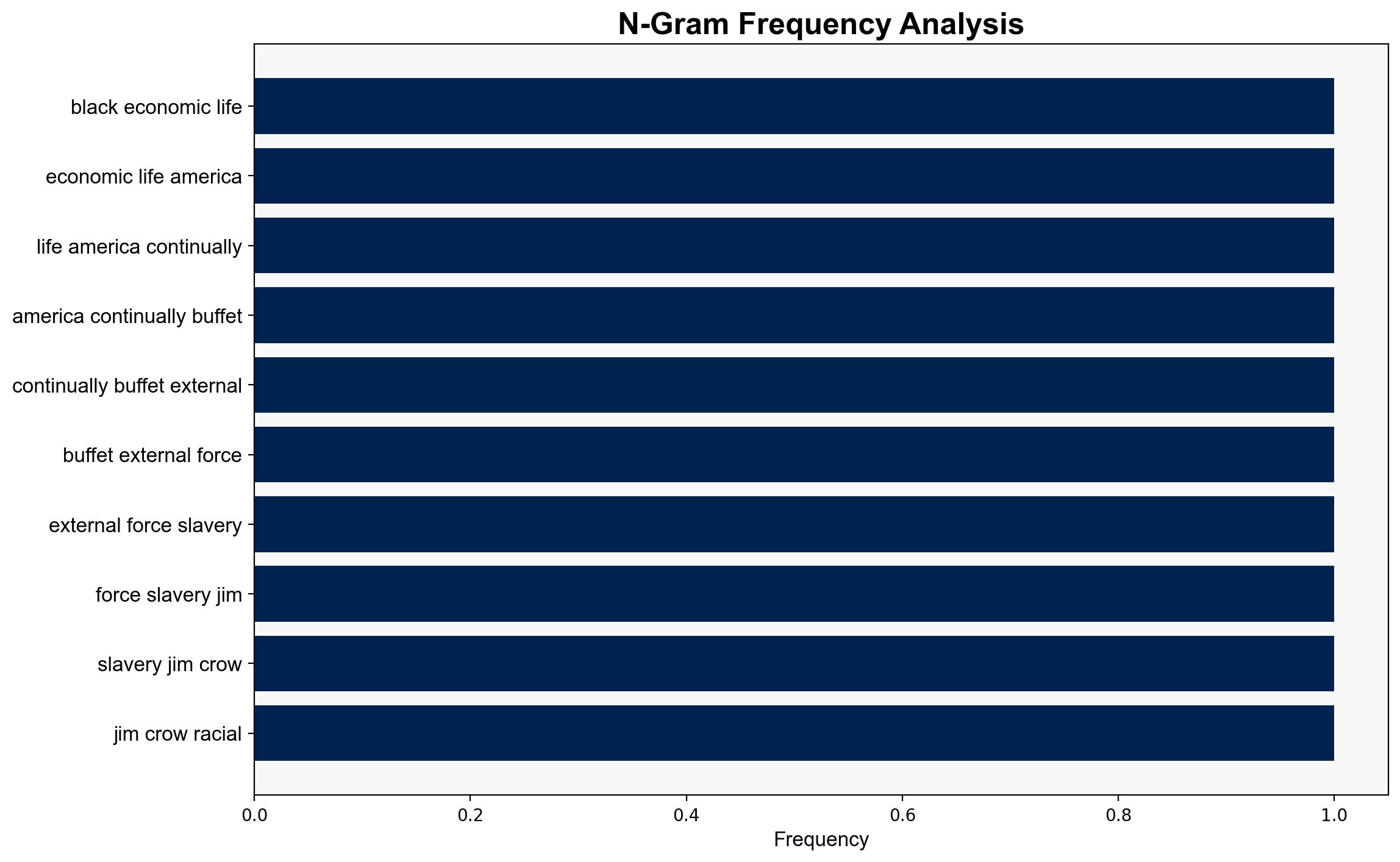Gaskin How riots and crime upended Black business districts – Boston Herald
Published on: 2025-10-04
Intelligence Report: Gaskin How riots and crime upended Black business districts – Boston Herald
1. BLUF (Bottom Line Up Front)
The most supported hypothesis is that systemic disinvestment and concentrated poverty, exacerbated by historical and ongoing racial injustices, are the primary drivers of the decline in Black business districts. This conclusion is drawn with a moderate confidence level due to the complexity of socio-economic factors involved. Recommended actions include targeted economic revitalization programs and community policing reforms to stabilize these areas.
2. Competing Hypotheses
1. **Hypothesis A**: The decline of Black business districts is primarily due to systemic disinvestment and concentrated poverty, which have been exacerbated by historical racial injustices and recent civil unrest.
2. **Hypothesis B**: The decline is mainly driven by internal factors such as high crime rates and the rise of illicit markets, which deter investment and drive away customers.
Using ACH 2.0, Hypothesis A is better supported as it accounts for both historical context and the structural economic challenges highlighted in the source text. Hypothesis B, while relevant, is more of a consequence than a primary cause.
3. Key Assumptions and Red Flags
– **Assumptions**: Both hypotheses assume that external and internal factors are mutually exclusive, which may not fully capture the interplay between systemic disinvestment and crime.
– **Red Flags**: The lack of recent data on recovery efforts or successful interventions in similar contexts. Potential bias in attributing decline solely to historical factors without considering current policy impacts.
– **Blind Spots**: Limited consideration of the role of technology and digital economy as potential revitalization tools.
4. Implications and Strategic Risks
The continued decline of Black business districts poses significant economic risks, including increased unemployment and social instability. The feedback loop between crime and economic collapse could lead to further disinvestment. Geopolitically, these areas could become focal points for civil unrest, impacting national security. Psychologically, persistent economic despair may erode community trust in government institutions.
5. Recommendations and Outlook
- Implement economic revitalization programs focusing on infrastructure improvement and small business support.
- Reform community policing to build trust and reduce crime rates.
- Encourage public-private partnerships to invest in technology and digital skills training.
- Scenario Projections:
- Best: Successful revitalization leads to economic growth and reduced crime.
- Worst: Continued decline results in increased civil unrest and further economic collapse.
- Most Likely: Gradual improvement with targeted interventions and sustained community engagement.
6. Key Individuals and Entities
– William Collins and Robert Margo: Economists who studied the impact of riots on property values.
– Robert Sampson: Sociologist who analyzed the cycle of violence and disinvestment.
– Steven Levitt and John Hipp: Researchers who explored the relationship between crime and business failure.
7. Thematic Tags
economic revitalization, community policing, systemic injustice, urban development





